Like any other fresh ingredient, cabbage that is left as is long enough, will start to rot, due to the bacteria that’s in it and that’s in the air. However, when pickled, the fermentation process that the cabbage goes through kills the bacteria that causes the cabbage to rot. And it creates an ideal environment for lactobacillus bacteria (also found in the cabbage) to flourish. Healthwise, that means that pickled cabbage (or any pickled veggie, for that matter) is rich in probiotics, naturally. Hence, it’s great for our health.
Another great by product of the fermentation is that it augments the amounts of the glutamic acid in the final product. Glutamic acid is an amino acid that is responsible for the umami flavor in foods.
Now that we understand the process let’s make it happen.
For a gallon size jar, you will need:
6.5lb shredded cabbage
3tbs koshering salt.
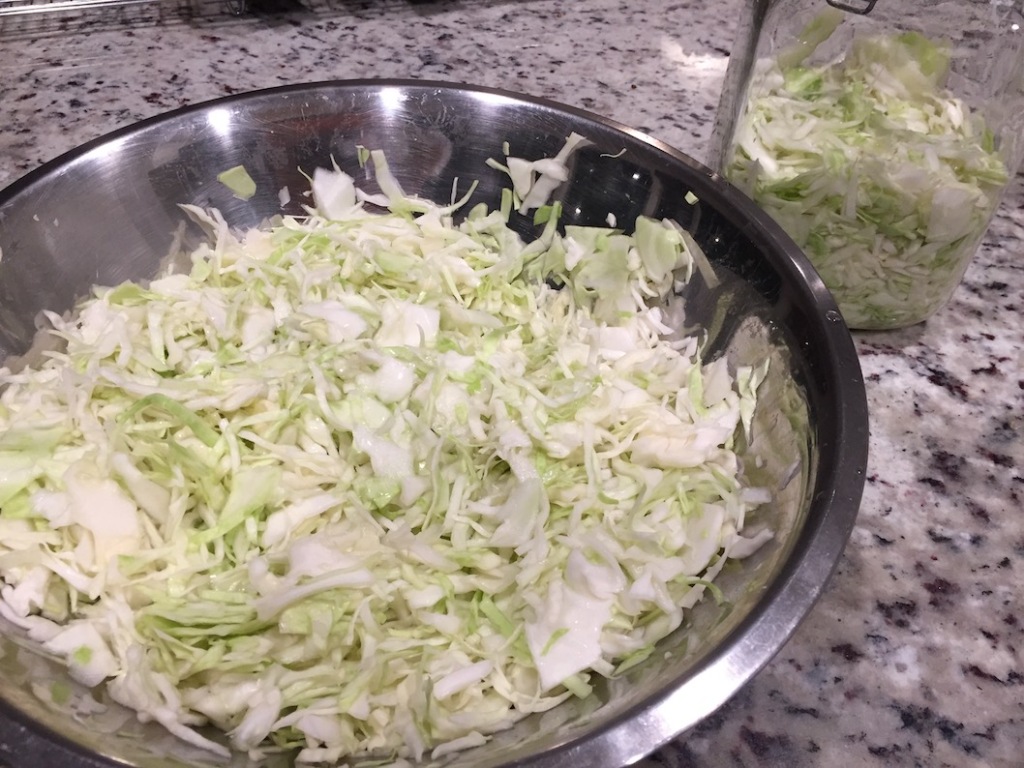
Place the shredded cabbage in a large bowl, sprinkle with the salt, and massage the cabbage to coat it well with salt. Let sit for 10-15 minutes. The cabbage wilts and extracts water, which is exactly what you want.
If you’d like to flavor your pickled cabbage, now would be the time. You may add chili pepper flakes, cumin seeds, caraway seeds, coriander seeds, fennel seeds – they all combine very well with pickled cabbage. I happen to like it ‘au naturel’.
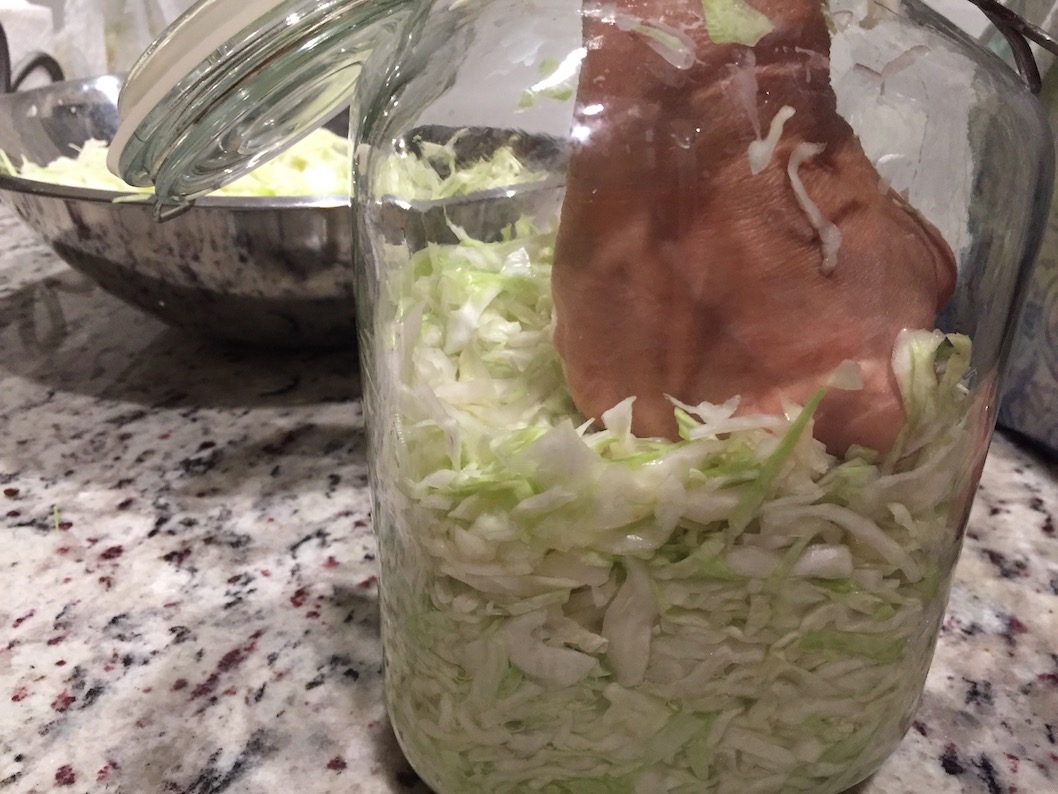
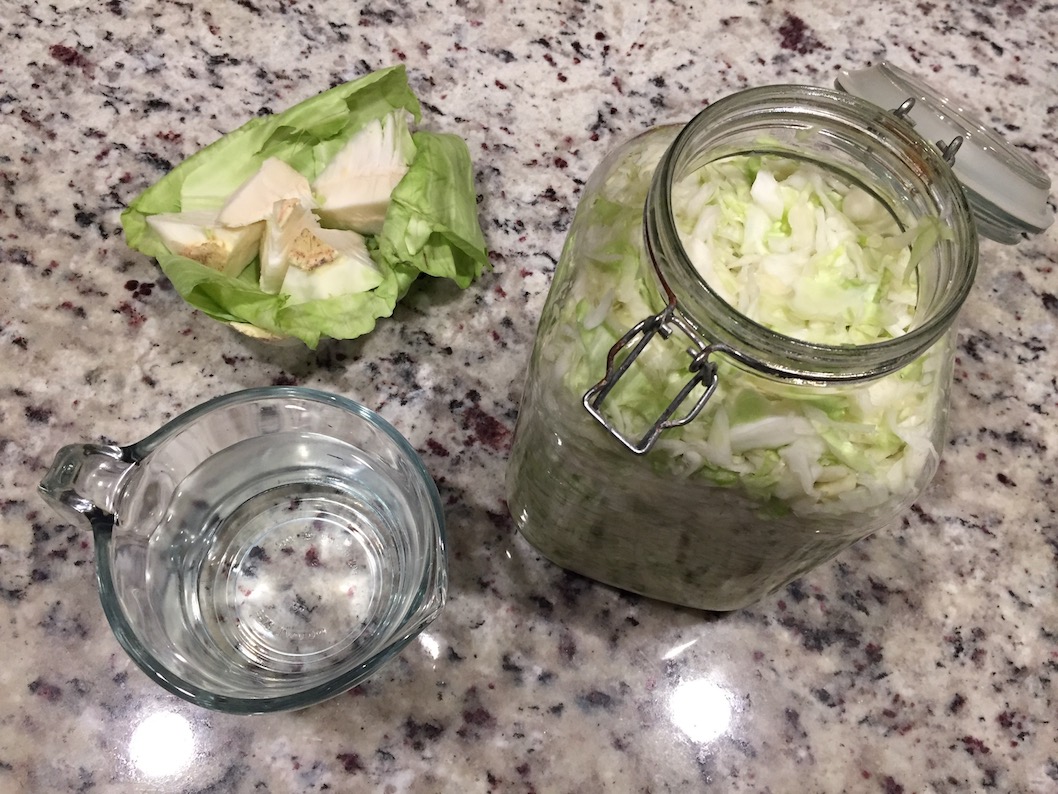
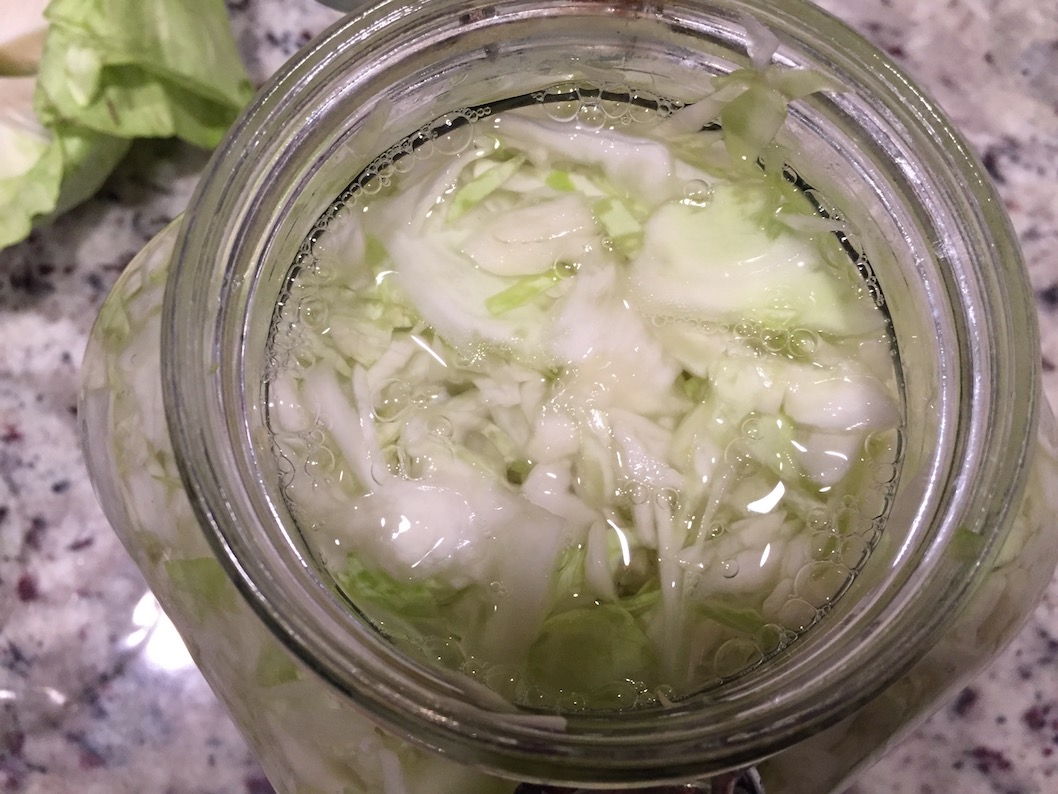
Sterilize a one-gallon jar with boiling water. Do not shake the jar or it might break. Discard of the water and fill the jar with the salted cabbage. Make sure, while filling, that you press down the cabbage in the jar as much as possible, using your fist. Add the salted water extracted from the cabbage.
If the cabbage is not covered with water, that means that your cabbage was of the drier kind (like my cabbage), and you’ll need to add water. In this case, mix 1 quart of boiling water with 1 tbs salt, and set aside to cool. Once the water is at room temperature pour it into the jar, only to the point where it covers the cabbage.
Seal the jar, place it in a bowl or a tray with a rim, and keep in a cool place away from direct light.
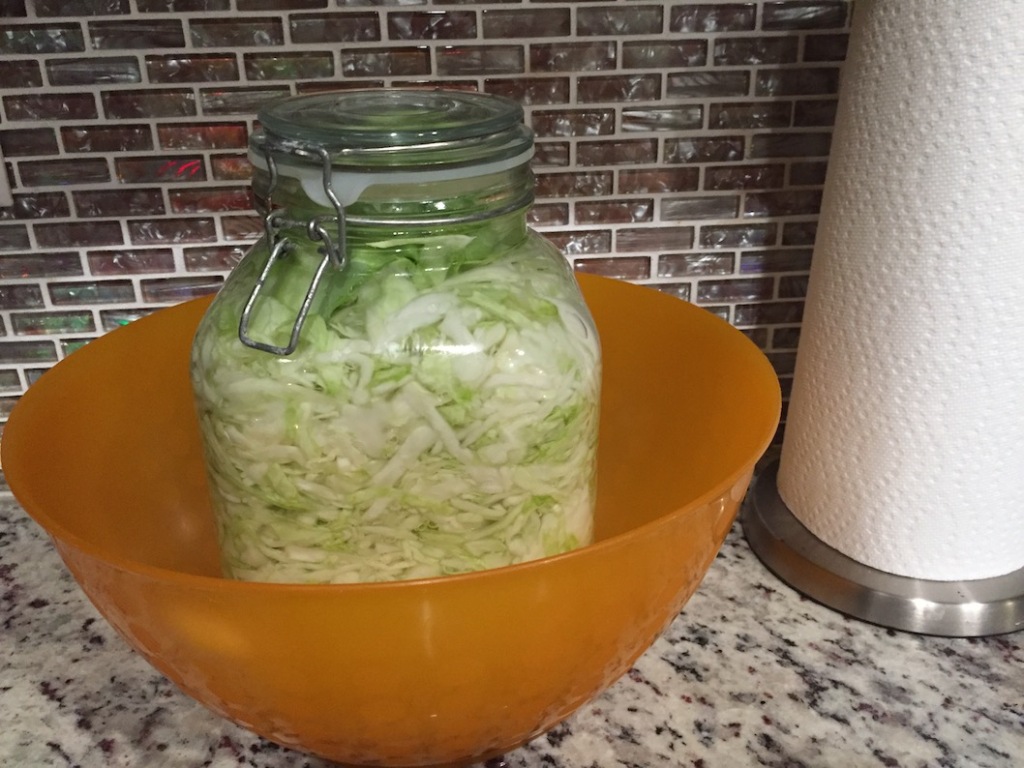
The fermentation process of the cabbage creates a lot of gas in the jar and sometimes pushes out the liquid, which is why you want to keep the jar in another container for a couple of days. Also, to prevent the jar from exploding, you need to open it for one second, once a day, to let the built-up gas out. After 3-4 days you don’t need to worry about it anymore.
The cabbage takes 2 weeks to pickle but is at its best after 3-4 weeks. In my case, it took 3 weeks before the cabbage was good to eat. At 5 weeks it was even better and still had a crunch to it. And at 3 months it turned totally wilted and soft, and resembled the sauerkraut you buy at the store.
So be patient. It’s worth it! And when you end up with the best sauerkraut ever, I’d love to hear about it.
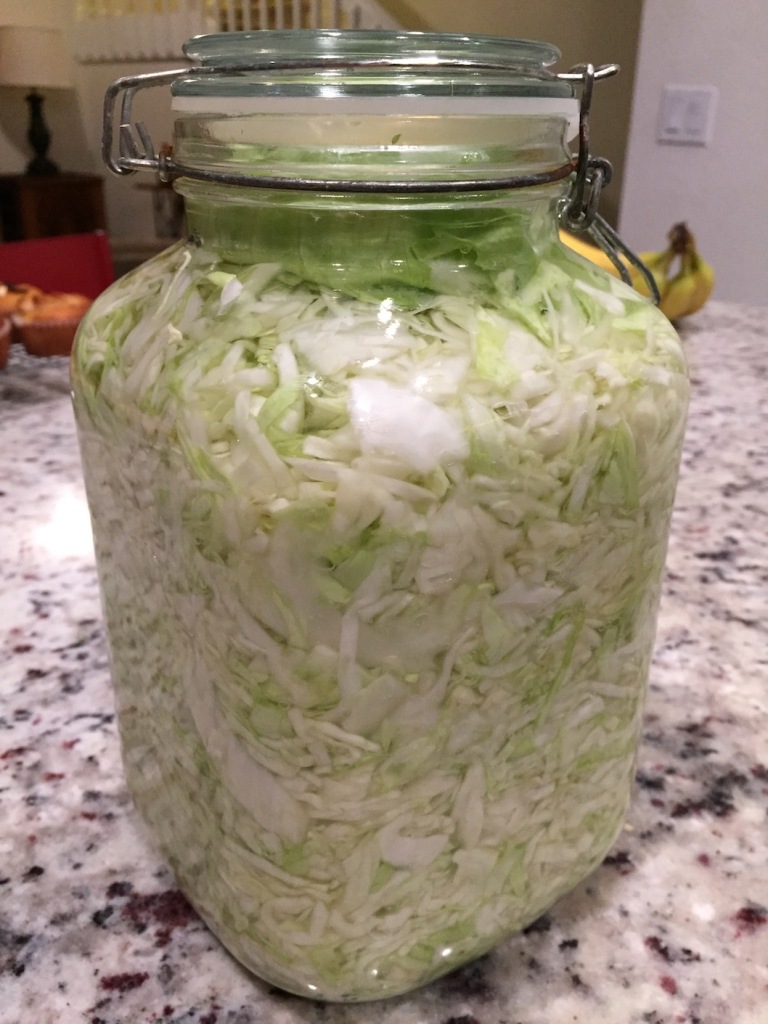
Just made… 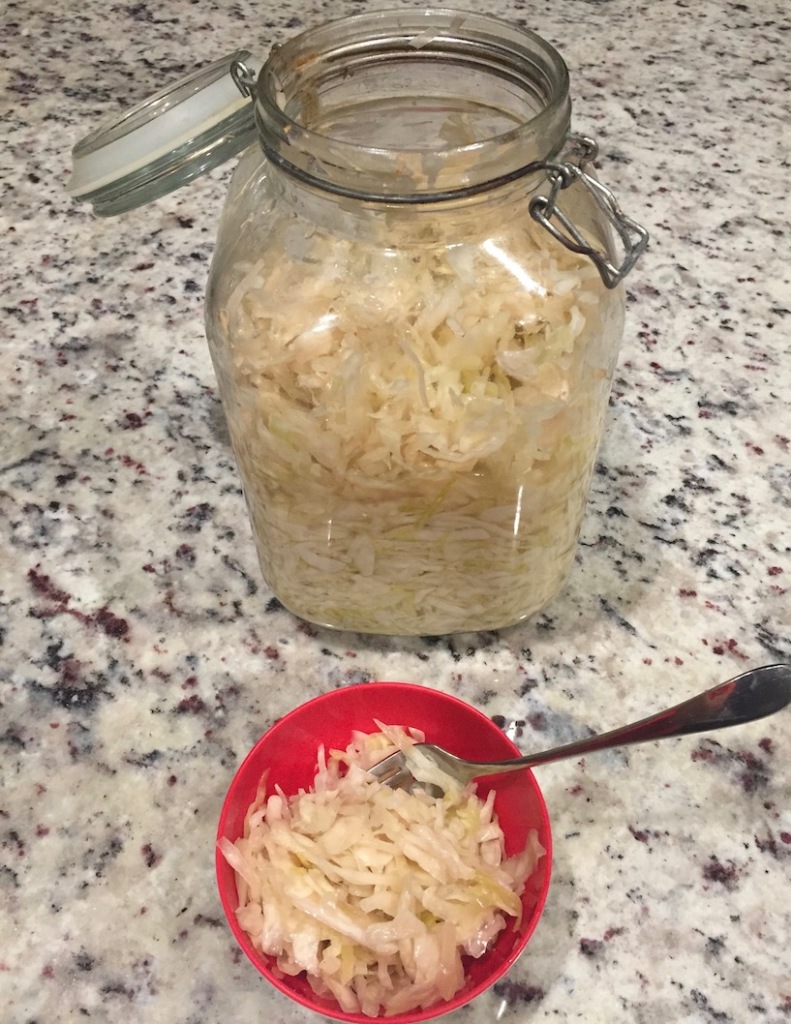
5 weeks later…
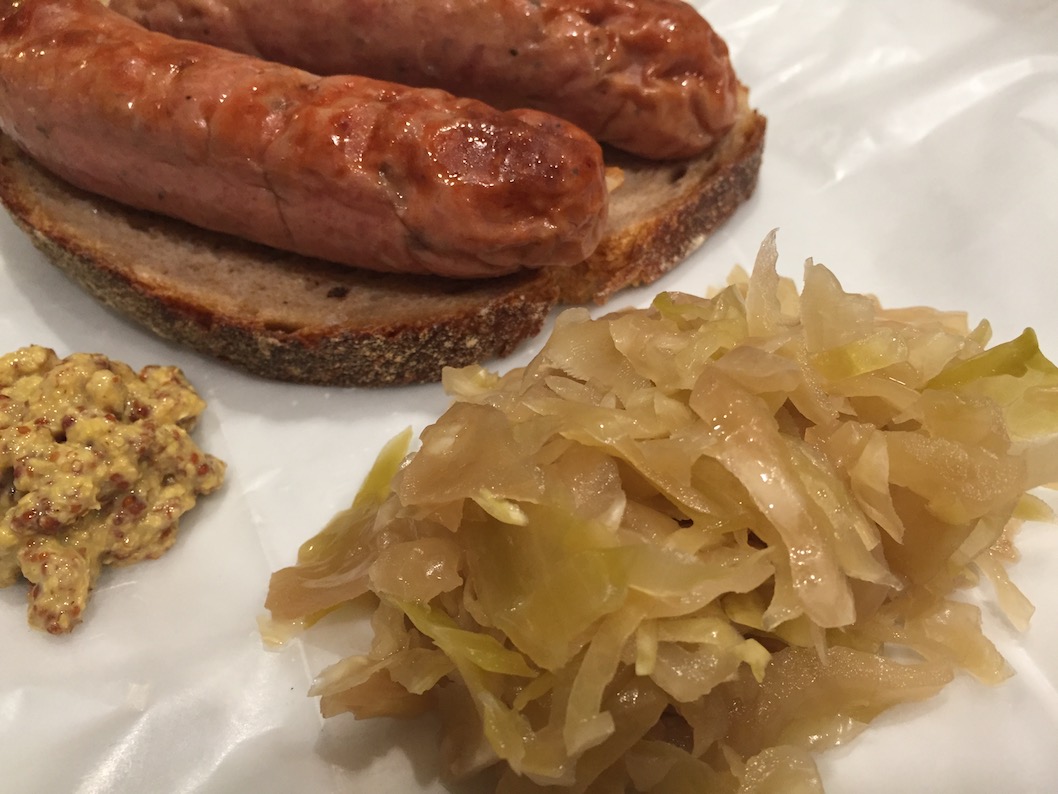
3 months later…
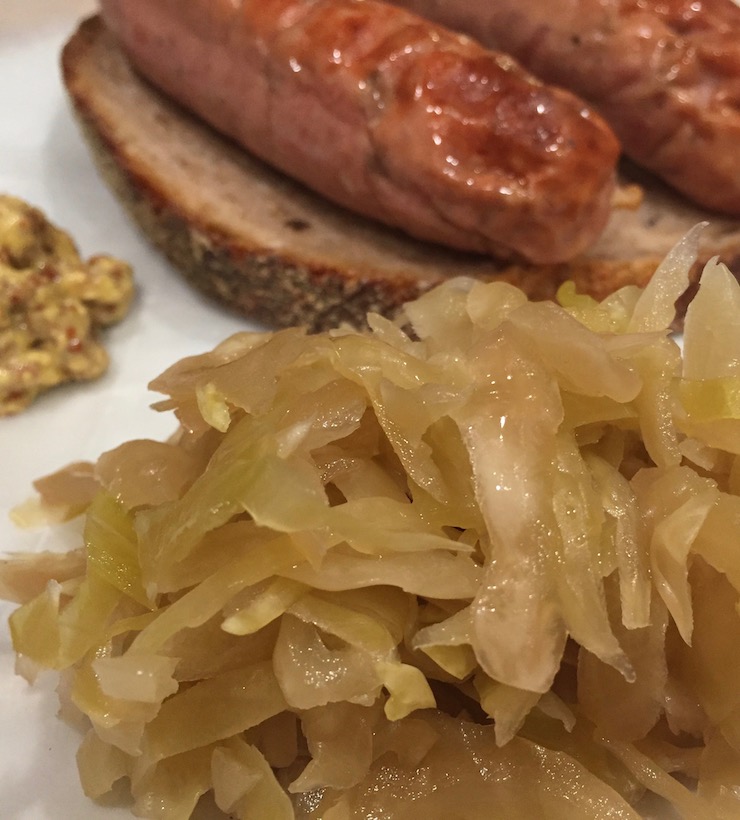
That’s definitely European, dear Tali. A long way, but delicious!